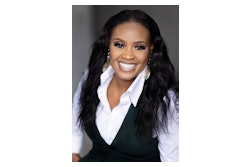Issues of Access and Affordability
Highlighted at Higher Education Conference
By Eleanor Lee Yates
CHAPEL HILL, N.C.
For all the dour reports about the lack of access to U.S. higher education, there are just as many potential solutions tossed about. Some argue that need-based financial aid must be increased; others are convinced the K-12 system must be the engine for change. And many activists and scholars say accessibility won’t improve until policy-makers and voters recognize the unique needs of the nation’s low-income students.
Those ideas and more were all under discussion during “The Politics of Inclusion: Higher Education at a Crossroads,” a conference held last month at the University of North Carolina at Chapel Hill. More than 150 federal and state policy-makers, foundation and business leaders, researchers and high-level educators from around the country attended the conference on college access and affordability.
Participants discussed appealing to university governing boards, state legislators, donors and voters to make higher education more accessible to the poor through student aid. They also discussed improving K-12 education, including partnering with low-performing schools, restructuring academic curriculums, offering “business plans” to boost low-performing schools’ performance and enrichment programs such as after-school business schools and college boot camp courses.
Keynote speaker Dr. James Moeser, chancellor of UNC-Chapel Hill, noted the importance of such measures. While other countries have increased college attendance, growth in the United States has slowed. For most of the 1990s, the United States ranked last among 14 nations in raising college participation rates, with almost no increase during the last decade.
“The new technologies, innovations and businesses in the 21st century will be created by highly-educated people, and as a country we are not doing enough,” Moeser said. He lauded college access programs like UNC’s noted Carolina Covenant, a program established several years ago that enables the neediest students to graduate debt-free by working 10-12 hours a week in a work-study program.
Dr. Walter R. Allen, the Allan Murray Cartter Professor of Higher Education at the University of California, Los Angeles, said he is pleased to see that Black students are now better prepared academically as they enter college. However, enrollment in college by Black males is steadily decreasing at both historically Black colleges and universities and predominantly White institutions. There were 3 percent fewer Black men than Black women at PWIs in 1971. By 2004, that gap had grown to 14 percent. HBCUs in 1971 had 6 percent fewer men than women, but there was a 12 percent difference in 2004.
*
The conference also examined ways to boost the number of Hispanic students going to and graduating from college. The Hispanic population has seen tremendous growth in the United States over the past decade. However, with the lowest educational rate of any demographic group, this growth poses a risk for the nation, especially if future Hispanic generations do not become college educated, said Dr. Marta Tienda, the Maurice P. During ’22 Professor in Demographic Studies at Princeton University.
She also questioned whether communities are ready to accommodate a growing population of second-generation Hispanic immigrants. If there aren’t higher education opportunities, that group could be severely affected. The projected demand for a college education “as the baby boom echo disappears” could also put Hispanic students at a disadvantage, she said. Tienda, who is from a poor Mexican family, encouraged teachers to put college on the radar for Hispanic students early. During the presentation, she told the audience that she was planning to become a hairdresser before her teacher suggested she go to college.
“Hispanic parents are often totally bewildered by the world of college,” she said, so teachers can make a real difference by educating the students and the parents about postsecondary options.
But Hispanic students and parents aren’t the only ones feeling anxious about college, said Dr. Jerome A. Lucido, vice president for enrollment policy and management at the University of Southern California. As colleges chase diversity, White students fear that fewer spaces will be available for them, particularly at prestigious institutions.
In his presentation, “White Students and Their Parents: Fewer, Richer, More Anxious?” Lucido discussed that anxiety, which has spawned a booming industry of test preparation classes, independent college consultants and college essay services.
Howard Lee, chairman of the North Carolina State Board of Education, recalled a recent trip to eastern North Carolina — a poorer area of the state. “So many students don’t have aspirations. In one group of 14 students I talked to, 12 did not think they could attend college,” he said.
Conference sponsors included the Lumina Foundation, the Andrew W. Mellon Foundation, the Spencer Foundation, the Jack Kent Cooke Foundation and the College Foundation of North Carolina.
© Copyright 2005 by DiverseEducation.com


















